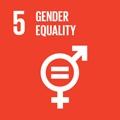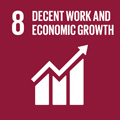- Docente: Claudia Manca
- Credits: 3
- SSD: SECS-P/10
- Language: English
- Teaching Mode: Traditional lectures
- Campus: Bologna
- Corso: Second cycle degree programme (LM) in International Management (cod. 5891)
-
from Apr 08, 2025 to May 19, 2025
Learning outcomes
"The students gain ability to effectively navigate cultural differences in the international workplace, connect with others across differences, and communicate in a way that builds trust and inspires people from diverse backgrounds to collaborate. At the end of the course the students are able to: - apply conceptual frameworks to systematically understand the cross-cultural contexts of international business, and theoretical concepts relating to culture, differences, and inclusion; - demonstrate understanding of culture and cultural differences in the workplace, identify and develop the competencies of an effective global manager, demonstrate cultural sensitivity and emotional intelligence in business and the workplace; - build connection with others across differences in a way that is comfortable, authentic, and compelling; - develop and deliver evocative stories that inform and inspire; - communicate their value and contributions to others with confidence and to maintain an inspiring presence in culturally diverse settings; - understand and leverage the nonverbal aspects of communication for more effective relationship building."
Course contents
This course offers a comprehensive examination of cultural differences, their understanding, and the impact on business and management practices. Through a multidisciplinary lens, students will examine how cultural differences impact leadership, collaboration, negotiation, and communication in diverse organizational settings. Emphasis is placed on developing self-awareness, cultural sensitivity, and emotional intelligence to foster trust and effective relationships across differences. Students will engage in practical exercises, simulations, and group discussions to build the competencies of a global manager, including storytelling, presence, and nonverbal communication. By the end of the course, they will be equipped to navigate intercultural environments with confidence, strategic insight, and respect for cultural differences, both at work and beyond.
Structure of the course:
1 WHAT IS CULTURE AND (WHY) DOES IT STILL MATTER FOR MANAGEMENT?
2 MAPPING CULTURAL DIFFERENCES: HOFSTEDE, TROMPENAARS, GLOBE MODELS
3 INTERCULTURAL COMMUNICATION APPROACH
4 ETIC AND EMIC PERSPECTIVES IN CONTEXT
5 INTERCULTURAL COMPETENCE VS CULTURAL INTELLIGENCE
6 NEGOTIATIONS ACROSS CULTURES
7 IDENTITY, BIAS, AND BELONGING
8 INTERSECTIONALITY AND STRUCTURAL INEQUALITIES
9 DIVERSITY VALUE AND COMMODIFICATION
10 GROUP DYNAMICS IN DIVERSE TEAMS
Readings/Bibliography
Required Readings:
- Brett, J. M., & Gelfand, M. J. (2006). A cultural analysis of the underlying assumptions of negotiation theory. In Negotiation Theory and Research (pp. 173-201). Psychology Press.
- Ely, R. J., & Thomas, D. A. (2001). Cultural diversity at work: The effects of diversity perspectives on work group processes and outcomes. Administrative Science Quarterly, 46(2), 229-273.
- Romani, L., Holck, L., & Risberg, A. (2018). Benevolent discrimination: Explaining how human resources professionals can be blind to the harm of diversity initiatives. Organization, 26(3), 371-390.
- Weisshaar, K., Chavez, K., & Hutt, T. (2024). Hiring discrimination under pressures to diversify: Gender, race, and diversity commodification across job transitions in software engineering. American Sociological Review, 89(3), 584-613.
Supplementary Readings (Optional):
- Cardador, M. T., & Caza, B. (2018). The subtle stressors making women want to leave engineering. Harvard Business Review, 23. https://hbr.org/2018/11/the-subtle-stressors-making-women-want-to-leave-engineering
- Ely, R. J., & Thomas, D. A. (2020). Getting serious about diversity: Enough already with the business case. Harvard Business Review, 98(6), 114-122.
- Hofstede, Geert, Cultures and Organisations, Software of the Mind, 2003, Profile Books
- Mahadevan, Jasmin, A Very Short, Fairly Interesting and Reasonably Cheap Book About Cross-Cultural Management, 2017, Sage.
- Meyer, Erin, The Culture Map: Decoding How People Think, Lead, and Get Things Done Across Cultures, 2016, PublicAffairs
Teaching methods
The main instructional approaches used in the course are:
- In-class Lectures
- In-class Discussions
- Group Work
- Case Studies
- Role Games
- Guest Lectures
Assessment methods
Class attendance is mandatory — students may miss no more than three of the ten lectures.
Course evaluation will consist of the following components:
Component Weight (%)
Final Exam 50
Group project 40
Class Participation 10
Final exam and group project structure:
The final oral exam lasts approximately 30 minutes and consists of open-ended questions that require critical reflection on course content, with an emphasis on whether students have understood the course concepts, their ability to critically reflect on them, and apply these concepts to real-life situations.
Students must also collaborate in groups to develop and deliver a 30-minute presentation on a topic of their choice related to cross-cultural management, aligning with their interests and/or career aspirations. This opportunity allows them to creatively apply course concepts to real-world issues, critically analyze their implications, and engage in meaningful discussions with peers. A few examples may include:
- How global brands adapt marketing campaigns across cultures
- Critical analysis of newly implemented DEI policies and initiatives in different contexts
- Cultural tensions in global teams and strategies for inclusion
- Cross-cultural leadership
Each student must actively contribute to the development and delivery of the group presentation. The project will be evaluated based on its content, critical analysis, and creativity.
Exam policy:
To successfully complete the course, students must pass both the individual final exam and the group project and achieve at least 70% attendance.
The group project grade cannot be rejected and remains valid for three exam sessions (through September). Students can refuse the oral exam grade, and there is no limit on the number of attempts allowed. Students have five working days to refuse a grade: they must send an email to the professor with the subject line “I reject the CCML grade” and include their name and matriculation number in the message body. Those who accept their grade do not need to take any action. The grade will be automatically registered.
Grading scale:
< 18: failed
18-23: sufficient
24-27: good
28-30: very good
30 e lode: outstanding
Students with disabilities and special needs (DSA) are required to disclose their condition to find the best possible accommodation.
Teaching tools
Tools, platforms, or resources used during the course:
- Learning platform: Virtuale (virtuale.unibo.it) contains the slides and the teamwork assignments
- Presentation software: PowerPoint
- Communication tools: Email; Forum on Virtuale
Office hours
See the website of Claudia Manca
SDGs



This teaching activity contributes to the achievement of the Sustainable Development Goals of the UN 2030 Agenda.
